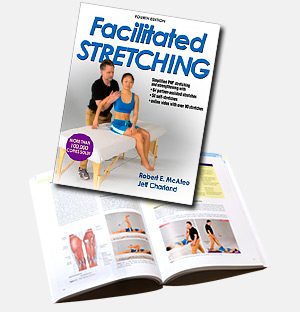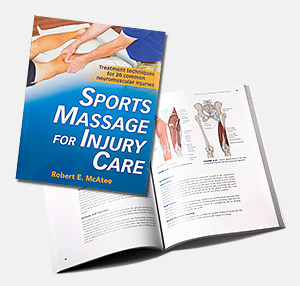Addressing Upper Extremity Nerve Entrapment Syndromes
8 CE Seminar Approved by NCBTMB and through CE Broker for FL, GA, SC, and TN
Provider #294954-00
20% Lecture, 80% Supervised Hands-on Practice
Course Description
Assessing and treating nerve entrapment conditions can be intimidating for massage therapists. This intensive seminar provides training in understanding and assessing possible nerve entrapment conditions and having the confidence to safely decide when massage interventions are appropriate, and when the client needs to be referred to another practitioner.
This course extensively reviews the major nerve pathways of the upper extremity, including the most common nerve entrapment sites for the brachial plexus, and the median, ulnar and radial nerve; reviews basic neural assessment tests, including Adson’s test for scalene and first rib involvement, Eden’s test for costoclavicular syndrome, Wright’s test for pectoralis minor syndrome, ulnar tunnel tests, and median nerve tests for pronator teres syndrome and carpal tunnel syndrome. Nerve glides are incorporated to enhance assessment of the median, ulnar, and radial nerve.
This seminar includes demonstration and extensive supervised practice in the application of effective soft-tissue interventions, including pin and stretch, transverse friction, and facilitated stretching, to help alleviate these conditions.
At the end of this seminar, therapists will have the knowledge and practical experience necessary to identify, assess, and treat the most common entrapment syndromes of the upper extremity, leading to better treatment outcomes, happier clients, and a more profitable practice.
Participants should bring linens, lubricants, and bolsters/pillows.
Wear a loose-fitting top and for women, please be able to expose the shoulder girdle (i.e. wear/bring a tank top, bikini top or have a bra that easily shows the chest wall and axilla) for the practical portion of the class.
Facilitated Stretching: A Baker’s Dozen
8 CE Seminar Approved by NCBTMB and through CE Broker for FL, GA, SC, and TN
Provider #294954-00
20% Lecture, 80% Supervised Hands-on Practice. Please dress for stretching and exercise.
Course Description
Facilitated Stretching is a safe and effective assisted-stretching technique that can be used with a wide variety of clients to regain or improve flexibility. Many massage and manual therapists, personal trainers, and athletic trainers would like to include effective stretches in their client sessions but feel they don’t have the training or expertise to perform the stretches correctly, or struggle with the best way to incorporate them into a session or a program.
This course is designed to teach a baker’s dozen of valuable stretches from the facilitated stretching repertoire and provides the opportunity for therapists and fitness professionals to acquire practical skills that can be used immediately to help assess current muscle function, improve range of motion, increase strength, address overuse injuries, and enhance performance.
Additionally, a program of self-stretching using these techniques can be invaluable for clients in their home stretching programs. The information is geared to those professionals who have minimal experience with PNF stretching theory and techniques and 80% of the time is devoted to hands-on practice under expert supervision.
Recommended Text
Facilitated Stretching, 4th edition
Robert E. McAtee and Jeff Charland
Human Kinetics Publishers
Facilitated Stretching for Massage Therapists
Can be 8, 12, or 16 CE Seminar (depending on location) Approved by NCBTMB and through CE Broker for FL, GA, SC, and TN
Provider #294954-00
20% Lecture, 80% Supervised Hands-on Practice
Need massage tables, massage chairs, or yoga mats along with linens, and bolsters or pillows.
Please dress for stretching and exercise.
Course Description
Massage therapists often feel they don’t have the training or expertise to correctly perform stretches and avoid incorporating them into their sessions. They may also avoid including stretches for their clients because they seem to strenuous.
This seminar is based on my book, Facilitated Stretching, and is designed to teach practitioners to incorporate the stretching protocols into table, floor, or chair sessions to achieve greater overall client outcomes.
Facilitated Stretching is a safe, simple, yet dramatically effective stretching technique that can be used with a wide variety of clients to regain or improve flexibility. This method of stretching is easy on the therapist, engages the client in the process, and easy to incorporate into a massage session.
Facilitated stretching, combined with soft tissue work, will enable the practitioner to obtain greater overall success in client treatment sessions. Additionally, a program of self-stretching using these techniques can be invaluable for clients in their home stretching programs.
Recommended Text:
Facilitated Stretching, 4th edition
Robert E. McAtee and Jeff Charland
Human Kinetics Publishers
Sports Massage for Treating Lower Extremity Injuries
8 CE Seminar Approved by NCBTMB and through CE Broker for FL, GA, SC, and TN
Provider #294954-00
20% Lecture, 80% Supervised Hands-on Practice
Need massage tables and usual gear
Dress appropriately to receive lower extremity massage work
Course Description:
Massage therapists work with soft tissue injuries in a way that few other practitioners do. That’s why athletes and active individuals experiencing chronic conditions of the lower extremity seek out their massage therapists to help them recover. Sports massage techniques are widely used to address musculoskeletal complaints of the lower extremity and are a valuable adjunct to the repertoire of any massage therapist interested in treating injuries.
This 8-hour seminar focuses on these chronic injuries that respond well to clinically-oriented sports massage:
- Chronic ankle sprain
- Achilles tendinopathy
- Fibularis tendinopathy
- Hamstrings strain and tendinopathy
- Adductor strain
- Jumper’s knee (patellar tendinopathy)
The format for discussion, demonstration, and practice is organized the same for each of these conditions:
- Introduction to the condition, typical history, signs and symptoms, review the relevant anatomy
- Demonstrate and practice assessment, including appropriate orthopedic and special tests
- Demonstrate and practice palpation examination
- Demonstrate and practice each element of the suggested treatment plan, then integrate them all in a “session.”
- Review self-care options for the client, including exercise and flexibility work
- Discuss perpetuating factors
The hands-on portion of this seminar includes a range of applications, including compressive effleurage and petrissage, broad cross-fiber work, longitudinal stripping, pin and stretch techniques, isolytic contractions, deep transverse friction, and facilitated stretching. The information and treatment protocols presented in this live seminar are adapted from Bob’s new book, “Sports Massage for Injury Care” released in 2019 by his long-time publisher, Human Kinetics.
Treating Piriformis Syndrome
8 CE Seminar Approved by NCBTMB and through CE Broker for FL, GA, SC, and TN
Provider #294954-00
20% Lecture, 80% Supervised Hands-on Practice
Need massage tables, linens, and bolsters/pillows.
Lubricants not needed, as work is done through clothing, please dress for exercise.
Course Description:
This course is designed to demonstrate an array of soft tissue techniques for one of the most common musculoskeletal complaints presented by clients.
We’ll discuss the causes and prevention of piriformis syndrome, review and palpate the relevant anatomy, and demonstrate/ practice assessment tests, and hands-on work that includes transverse friction, pin and stretch techniques, and isolytic contractions.

